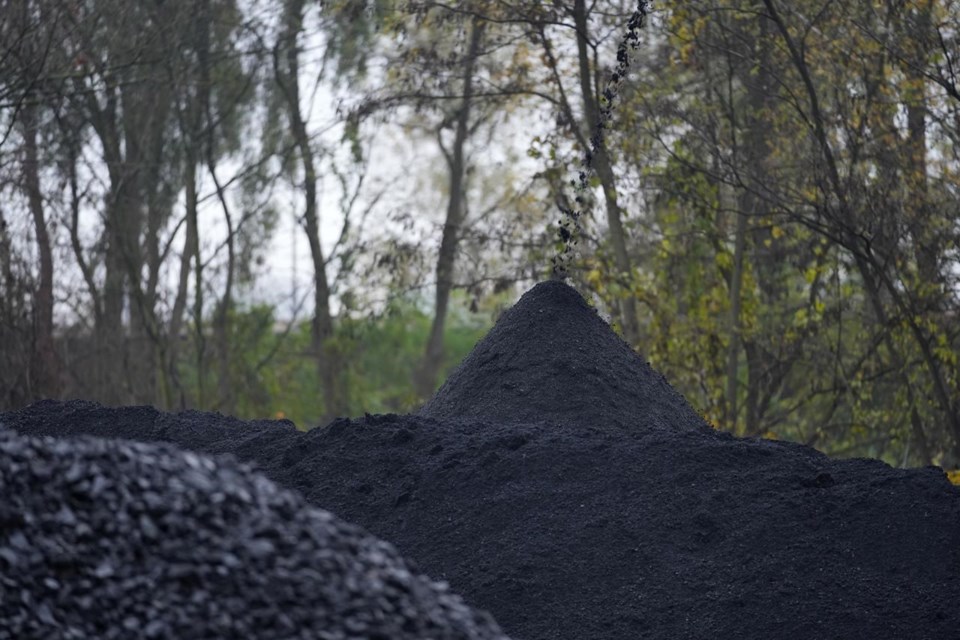OSTRAVA, Czech Republic (AP) — In this part of northeastern Czech Republic, huge piles of coal are stacked up ready to sell to eager buyers and smoke belches from coal-fired plants that are ramping up instead of winding down.
Ostrava has been working for decades to end its legacy as the most polluted area of the country, transitioning from an industrial working-class stronghold to a modern city with tourist sights. But has triggered an that as paved the way for , endangering climate goals and threatening health from increased pollution.
Households and businesses are turning to the fuel once considered obsolete as they seek a , whose prices have surged as .
Demand for brown coal — the cheapest and most energy inefficient form — used by Czech households jumped by almost 35% in the first nine months of 2022 over a year earlier.
In the same period, production rose more than 20%, the first increase after an almost continuous, decadeslong decline, the Czech Industry and Trade Ministry said.
“We’re worried,” said Zdenka Němečková Crkvenjaš, who is responsible for environment as a member the governing council of the Moravian-Silesian region. “If the prices won’t go down, what might happen is that we’ll be facing an increased pollution.”
The region is part of the Upper Silesian Coal Basin, a large industrialized area straddling the Czech-Polish border with and factories producing steel, power and the type of coal used for steel-making that date to the 19th century.
A combination of burning coal for residential heating and industrial plants resulted in “catastrophic” air pollution at the end of the communist era in 1989, said Petr JanÄŤĂk from Technical University Ostrava, an air pollution expert who cooperated on that recently produced an online model of the polluted air on the Czech-Polish-Slovak border.
, it’s also a health hazard, releasing heavy particle emissions, nitrogen oxides and mercury, which contaminates fish in lakes and rivers.
A decline of industrial and mining activities and advent of new environmental standards after the Czech Republic joined the European Union in 2004 vastly improved air quality.
But big challenges remain.
Airborne dust emissions — PM10 particles — now meet environmental limits in the region, but concentrations of smaller PM2.5 particles that can reach deep into the lungs and bloodstream still do not hit World Health Organization standards.
cities by Spain’s Barcelona Institute for Global Health, or ISGlobal, puts the regional capital of Ostrava and the nearby towns of Karviná and HavĂĹ™ov among the top 10 most polluted European cities. It estimated that 529 deaths a year could be avoided in those three cities if air quality guidelines are met.
Burning coal also spews the dangerous substance benzo(a)pyrene, whose levels are still high despite government programs that pay to replace old furnaces with more effective ones that reduce pollution.
Some 50,000 furnaces still need to be replaced in the Ostrava region, said Němečková Crkvenjaš, estimating that figure at 500,000 in a more populated and polluted area across the border in Poland.
“I’m afraid this winter won’t be ideal as far the air pollution is concerned,” she said. “I’ll be delighted if I’m wrong.”
Roman Vank, a board member for coal seller Ridera in Ostrava, said coal sales went up some 30% compared with last year. The cheapest form — brown coal — was most in demand.
JanÄŤĂk, the scientist, said the impact to air quality is hard to predict right away, especially if it's another mild winter, and that pollution “might get only slightly worse.”
He said a positive development is that force people to acquire solar panels, more effective heating systems and try to become less dependent on sources of energy.
“There are two opposing trends: The first one is that people have been trying to use better and more efficient furnaces, and the second one is they ," JanÄŤĂk said. “That’s perhaps a result of a shock or worries, and they want to get supplies ready."
Czech Greenpeace spokesman Lukáš Hrábek expected a negative impact in the near future.
“We see conflicting trends right now. We see higher coal consumption, but at the same time, we see a massive investment in renewable energies, in heat pumps, in insulation," Hrábek said. “So it’s hard to say what the long-term effect will be, but the short-term effect is quite obvious, the air pollution will be worse because of the higher coal consumption.”
In another sign of coal's revival, the Czech Republic has reversed plans to completely halt mining near Ostrava to help safeguard power supplies amid the energy crunch.
The state-owned OKD company will extend its mining activities in in the Ostrava region until at least the end of next year, citing “enormous” demand. It will be mostly used for generating power and household heating, with coal-fired power plants producing almost 50% of the country's electricity.
The decision came after starting in August over the war in Ukraine and as it works to .
The Czech government aims to phase out coal in energy production by 2033 and increase its reliance on nuclear power.
___
Follow AP’s climate and environment coverage at
Karel Janicek, The Associated Press



